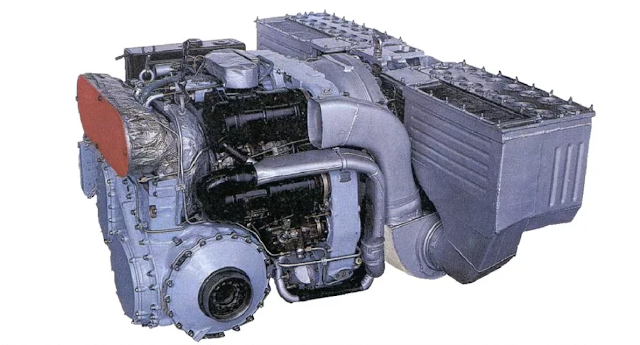Soviet tank track extensions

The first idea was represented using new cast tracks with integrated extensions. The extension was one-sided. The results showed that these new tracks had some success at reducing standard ground pressure, from the standard 80,4kPa to 63,8kPa. The success was limited since these tracks only increased mobility slightly and had several drawbacks. Bending of the lower track branch and inability to transport vehicles using trains due to overall wider body of the T-54.
 |
| T-54 track with casted extension |
 |
| T-54 with snow tracks |
Similar issues plagued the framework during the development of snow tracks on a T-54 that were tested in 1947. The entire caterpillar assembly was made out of 2 different track segments with an alternating pattern: standard width track and cast track with extension.
In 1950, the second framework showed progress with the development of attachable track extensions on the prototype Object 730 (T-10). The assembly included blades with a 3 layered spring, these parts were attached to each track using a bolt and clam.
 |
| Object 730 with detachable track extensions |
Comparison trials were conducted and showed that track extensions offered better mobility on soft terrain compared to standard tracks. Extended tracks also reduced the sinking rate of the vehicle in mud/swamp terrain by 30% and offered 11% better traction. Further trials showed the surprising durability of the assembly during a 500km route snow march.
 |
| T-10A trials with extended tracks |
The same idea was continued and trialled on the 38th Research and Testing Institute (38-й НИИБТ) with an improved design using a T-54, utilizing a much more rigid and flexible extension assembly. This prototype track differed from the standard caterpillar assembly, due to it having an additional membrane with an integrated hole to mount an extension piece using a bolt.
Through 1965-66, a similar design was developed and to be used on the tracks of Object 432. The extensions were to be mounted between each individual track on special brackets on the linking segments. Trials were conducted but in the end, it was noted that such extensions did not fit the set requirements and would not be used as a widespread solution to improve mobility on soft terrain.
 |
| Object 432 track extensions |
 |
| T-54A equipped with detachable extensions (1961) |
Taken from: M.V. Pavlov I.V. Pavlov; Soviet Armoured Vehicles 1945-1965, Part 1 Light, medium and heavy tanks




Comments
Post a Comment